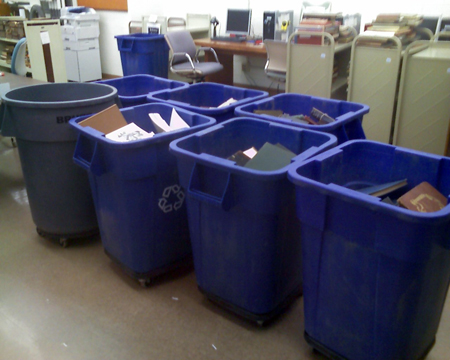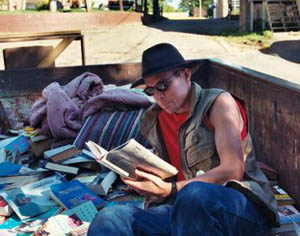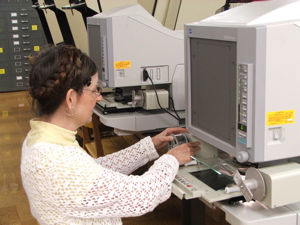The good news is that the Peoria Public Library is finally reopening its Local History and Genealogy section that was closed for a while due to the $28 million remodeling/renovation/building project. The bad news is, it’s only open limited hours:
Peoria Public Library opened the new Local History and Genealogy Room at the Peoria Public Library Main Library on Tuesday, March 15 at 10:00 a.m.
The new facility is on Lower Level One. The room, enclosed with glass walls, will be open from 10:00 a.m. to 4:00 p.m. Tuesday, Wednesday and Thursday and from 9:00 a.m. to noon on Saturday. During construction, the department was located off-site and materials were moved back in January and arranged in the new space.
Wait a minute. The taxpayers just spent $28 million for a library “expansion,” and now we’re being told they’re limiting access to arguably the most vital section of the library? Only certain days? And then only a portion of those days?
I was just looking over the library’s strategic plan. I’m wondering how reducing hours will “increase value to customers” (objective 2.1), or “enhance and optimize facilities” (objective 4.1). Or how going from a full-time research library to a part-time research library jibes with the library’s vision: “To advance learning, knowledge, personal growth, and the quality of life in the greater Peoria area.” Does “advance” mean “go backwards” now?
“The Peoria Public Library,” the strategic plan promises, “will strive to provide … innovative services and collections that are readily accessible [emphasis added], easy to use, and relevant to community needs, and that are known and valued by every segment of the community.” Does “readily accessible” mean taking materials that used to be available every day and hour the library was open and putting them on a special floor that’s now only open limited hours?
Perhaps the library’s stated mission should be recast from “Bringing people and information together,” to “Bringing people and information together only on Tuesdays, Wednesdays, and Thursdays from 10 to 4 and Saturday from 9 to noon,” or “Bringing people and information together less often.”
Library Director Ed Szynaka has not responded to my request for comment.
UPDATE: I received an e-mail this morning from the library director. Apparently he did try to write me earlier, but transposed a couple of numbers in my e-mail address, which is why I didn’t receive it. Here’s his response:
Thank you for contacting Peoria Public Library. I am unable to tell from your communication whether you have been to visit our new Local History room which has only been open to the public for two hours as I write this. If you have visited I believe you will have noticed the many physical improvements that have been made both to care for the collection and to offer it more easily to our visitors. As you may be aware, so much of the collection is unique and one-of-a-kind and our objective was to offer as much access as possible in a controlled environment that would protect it. We believe we have succeeded.
You have stated that Local History is the most valuable resource Peoria Public Library offers. Certainly it is unique, but it is not the resource in the widest demand nor the sole purpose of the library. As Library Director in these tough economic times, I must balance the needs of the entire community with our operating budget. The operating budget is a separate issue from our bond measure. Our $28 million building project created structures that will enable our community to have the very best library service for the next several generations. It is unfortunate that at the time Peoria Public Library is reopening, operating funds are not as readily available and we must live within our means.
We are just now entering a new era of library service which will reach its full potential as the remainder of our buildings reopen in 2011. As with any new venture, we must have a starting place from which to launch operations and as public usage and demand show what hours of operation work well for our community we will adjust. In the meantime, we offer 21 hours of open access to the collection as well as online databases that can be used in any Peoria Public Library and some from home 24/7 with a library card. Many local history questions can be answered through our reference department if immediate answers are required. Our Local History collection has a wonderful new space that will protect our holdings and volunteers from The Peoria County Genealogical Society are helping to staff the room.
I thank you for input and assure you that we are keeping close watch on usage and demand for all our library services.
Sincerely,
Edward M. Szynaka
Director
Peoria Public Library
UPDATE 2: Here is my response to Mr. Szynaka:
Dear Mr. Szynaka,
Thank you for your response. I still vociferously disagree with the decision to restrict hours to the local history and genealogy section.
Taxpayers were assured at the time of the referendum (and many times subsequently) that the library would be able to staff the branches adequately even with the addition of a new branch on the north end. We were told that the new open floor plan downtown and self-checkout devices would allow the library to maintain the same level of service with fewer staff members. In fact, the library’s strategic plan states explicitly, “A new, revitalized Main Street Branch will be able to offer better service with a smaller staff.” [emphasis added] We were told that operating costs would be further kept in check because the upgrades would provide better energy efficiency. We were told the library would actually make more materials directly available as they would be moved out of the basement onto the shelves. Now you’re telling me and all the other taxpayers of Peoria that you can’t afford the operating costs resulting from your capital improvements/expansion after all? And that as a result you have to restrict access to even more materials than were previously restricted?
Let me put it bluntly: I never would have supported the library referendum if I had known the Local History and Genealogy section would be locked up and inaccessible over 60% of the library’s operating hours. I even wrote a letter of support for a grant application for the library that specifically singled out the local history resources as being a vital asset to our community. Now you’re effectively taking that asset away from the working community.
You asked if I had visited the new Local History room. The answer is no — not because I don’t want to visit, but because I can’t visit due to the restricted hours. I work during the day, like most people in Peoria. I note that the room is open for three hours on Saturday, but in the summer when the branch closes on Saturday, even that won’t be an option. So the materials are now effectively inaccessible to the working community.
You mentioned that this resource is “unique.” That is precisely why I feel so strongly that it should be available whenever the library is open. Unlike novels, movies, and even computers that can be accessed from several sources, the local history information in your collection is only available in one place: the Peoria Public Library. If patrons want to search pre-1991 editions of the Peoria Journal Star or historic City Council minutes archives or the expansive vertical file, there is no other place this information can be accessed.
I respectfully and earnestly request that the library keep its promises to provide better service by making the Local History and Genealogy section fully accessible to the public again.
Sincerely,
C. J. Summers


 The Peoria Public Library’s architect for the new north branch has
The Peoria Public Library’s architect for the new north branch has 
 Peoria School Board member Jim Stowell believes the new northern branch of the library is misplaced, and would be better located by Expo Gardens and Richwoods High School. He doesn’t think it’s too late to change locations, either, since no construction has begun yet. A little over a week ago, he sent this letter to Peoria Public Library Director Ed Szynaka, Peoria Park District Director Bonnie Noble, Peoria Public Schools Superintendent Ken Hinton, and City of Peoria Mayor Jim Ardis:
Peoria School Board member Jim Stowell believes the new northern branch of the library is misplaced, and would be better located by Expo Gardens and Richwoods High School. He doesn’t think it’s too late to change locations, either, since no construction has begun yet. A little over a week ago, he sent this letter to Peoria Public Library Director Ed Szynaka, Peoria Park District Director Bonnie Noble, Peoria Public Schools Superintendent Ken Hinton, and City of Peoria Mayor Jim Ardis: I do a fair amount of research in the microfilm section of the library. This has generally meant loading up the reel on their antiquated microfilm readers and scrolling through the film with a hand crank (their automated readers only have two speeds — blistering fast and dog slow — which I find unhelpful). Then, when I found something I wanted to print off, I rewound the reel and take it over to one of their microfilm reader/printers and loaded it up again. These are pretty nice, but there are only two of them, so they don’t want you hogging them if you’re not printing anything. Copies are 25¢.
I do a fair amount of research in the microfilm section of the library. This has generally meant loading up the reel on their antiquated microfilm readers and scrolling through the film with a hand crank (their automated readers only have two speeds — blistering fast and dog slow — which I find unhelpful). Then, when I found something I wanted to print off, I rewound the reel and take it over to one of their microfilm reader/printers and loaded it up again. These are pretty nice, but there are only two of them, so they don’t want you hogging them if you’re not printing anything. Copies are 25¢.